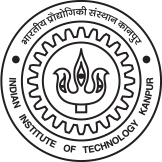
संदीप वर्मा
PhD (University of Illinois)
Professor, Department of Chemistry
शोध करना दिलचस्पी
My lab is interested in using biological building blocks to unravel diseases concerning protein aggregation and indulge in creating bioinspired soft matter. These studies involve synthetic organic chemistry and state-of-the-art spectroscopic and microscopic tools.
CL 206E ,
Department of Chemistry
IIT Kanpur,
Kanpur 208016
विशेषज्ञता
Bioorganic Chemistry, Chemical Biology, Biological Materials Science
शिक्षा
PhD (1994), University of Illinois, Chicago, USA
M. Sc. (1989), Banaras Hindu University
शिक्षण क्षेत्र
Organic Chemistry
Drug Design and Metabolism
Bionanotechnology
चयनित प्रकाशन
A novel molecular scaffold resensitizes multidrug-resistant S. aureus to fluoroquinolones. Chem. Commun., 2019, 55, 8599-8602.
Controlled release of hydrogen sulfide significantly reduces ROS stress and increases dopamine levels in transgenic C. elegans. Chem. Commun., 2019, 55, 10142-10145.
Tripeptide-induced modulation of mesenchymal stem cell biomechanics stimulates proliferation and wound healing. Chem. Commun., 2020, 56, 3043-3046.
Functional catechol-metal polymers via interfacial polymerization for applications in water purification. ACS Appl. Mater. Interfaces, 2020, 12, 19044-19053.
Purine-blended nanofiber woven flexible nanomats for SERS-based analyte detection. Chem. Commun., 2020, 56, 5795-5798.
Peptide nanostructure-mediated antibiotic delivery by exploiting H2S-rich environment in clinically-relevant bacterial cultures. ACS Infect. Dis., 2020, 6, 2441-2450.
Bioinspired adenine–dopamine immobilized polymer hydrogel adhesives for tissue engineering. Chem. Commun., 2020, 56, 11303-11306.
Cu-tetracatechol metallopolymer catalyst for three component click reactions and β-borylation of α, β-unsaturated carbonyl compounds. Chem. Commun., 2020, 56, 13044-13047.
Environmentally benign, intrinsically coordinated lithium-based solid electrolyte with modified purine as a supporting ligand. Chem. Eur. J., 2020, 26, 16706-16711.
Local and sustained delivery of rifampicin from a bioactive ceramic carrier treats bone infection in rat tibia. ACS Infect. Dis., 2020, 6, 2938–2949
पुरस्कार एवं फैलोशिप
Punjab University Bhagyatara Award 2014
Ranbaxy Research Prize, 2013
J C Bose National Fellow, DST, 2013
DAE-SRC Outstanding Investigator Award, 2012
Fellow, Indian Academy of Sciences, 2011
Shanti Swarup Bhatnagar Prize, 2010
Fellow, National Academy of Sciences, India, 2010
Swarnajayanti Fellow, DST, 2005-2010
पेशेवर अनुभव
IIT Kanpur, 1997-
Göttingen, Germany, 1996-1997
Max Planck Institute for Experimental Medicine
Johns Hopkins Medical Institutions, Baltimore, USA, 1994-1996
वर्तमान शोध
Research program in the Verma group applies bioessential molecules for creating organic frameworks, to study biomimetic processes and to decipher ordered aggregation relevant to certain neurodegenerative diseases. These studies encompass a broad canvass of synthetic organic chemistry, crystallog-raphy, microscopy, and cell and material studies.
Our ongoing work on metal-nucleobase interaction focuses on existing knowledge of nucleic acid-metal interactions to craft structurally interesting architectures with outstanding photophysical properties, new materials for gas storage and hybrid electrodes. We have reported formation of entangled networks and extended frameworks, with selective and reversible water vapour and gas adsorption behavior. On another note, a green fluorescent gold nanocluster, stabilized by modified purine ligand, was reported as a stable, nuclear stain for a variety of cancer cells.
Peptide-based self-assembly offers unique entry to construction of soft structures, in order to model molecular mechanisms of aggregation-induced diseases and for designing soft materials with desired properties and functions. It is proposed that precise control over shape and size selectivity in peptide-based nanostructures also offers crucial insight into operating mechanisms associated with protein self-assembly process.
We work on peptide conjugates to address prion protein and Ab aggrega-tion. In this context, we also design small molecules which interfere with protein/peptide aggregation. One such example is inhibition of insulin amyloidogenesis by designed peptide conjugates. Our laboratory is engaged in rational ligand synthesis and inhibition of amyloidogenic diseases.



